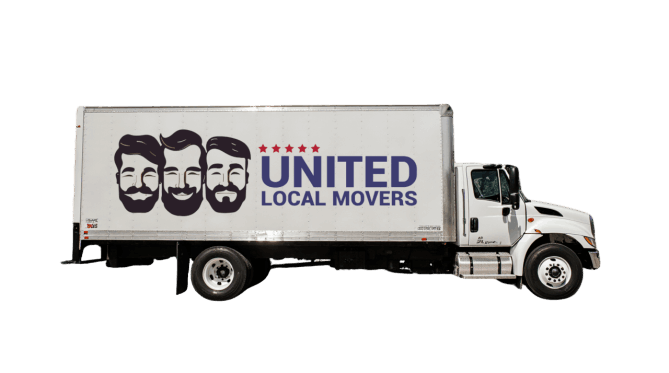When you move, updating your voter registration is just as important as changing your address or transferring your driver’s license. Each state has its own election laws, and failing to register correctly could mean losing your eligibility to vote in upcoming elections. Staying compliant locally also ensures that your new residency records, tax filings, and civic rights remain in order.
This guide explains how to handle voter registration and local compliance after your move — so you can stay informed, legally compliant, and ready to participate in your community from day one.
Why Voter Registration Matters After a Move
Voting laws are location-based, meaning your eligibility depends on your current address. If you move across town or across state lines, your old registration may no longer apply. Updating it guarantees that:
- 🗳️ You’re assigned to the correct polling place
- 🏛️ You can vote in local and state elections that affect your new area
- 📬 You receive official election mail and ballots
- ⚖️ Your identity and address remain legally verified
- 🚫 You avoid being marked “inactive” or removed from voter rolls
It’s not just civic responsibility — it’s legal protection for your right to vote.
Step 1: Know the Rules in Your State
Each state has its own registration deadlines and methods. In most cases, you must update your voter registration at least 15–30 days before an election. Some states even allow same-day registration. To find your state’s requirements, visit nass.org/can-I-vote or your local election office’s website.
- 📅 Registration deadlines vary by state and election type
- 📍 Some states automatically update your voter record when you change your address at the DMV
- 🧾 Others require a separate voter registration form
Checking this early avoids surprises during election season.
Step 2: Update Your Voter Registration Address
If you moved within the same state, you can usually update your voter registration quickly online or by mail. Here’s how:
- 🌐 Go to vote.gov and select your state
- 📄 Fill out an address change or voter registration update form
- ✉️ Mail the form if required (some states still use paper submissions)
- 📬 Wait for confirmation by mail or email from your election office
If you moved to a new state, you’ll need to complete a new voter registration from scratch. Old registrations don’t automatically transfer across states.
Step 3: Know When You Need to Re-Register
You must re-register to vote if any of the following apply:
- 🏡 You moved to a new state or county
- 📬 You changed your home address within the same district
- 📇 You changed your name (e.g., after marriage)
- 🧾 You wish to update your political party affiliation
Even small address changes can affect your polling place assignment — especially if your city has multiple voting precincts.
Step 4: Verify Your Registration
After submitting your update, verify that your new address and polling place are correct. Use official lookup tools such as:
- vote.org/am-i-registered-to-vote
- Your state’s Secretary of State or Board of Elections website
Check your status at least a month before Election Day to make sure there are no issues. If you’re marked “inactive,” contact your election office immediately.
Step 5: Understand Local Compliance Requirements
Beyond voting, local compliance means updating your residency with various civic and government entities. Depending on where you move, you may need to:
- 🏛️ Register for local taxes or property assessments
- 🚘 Update your driver’s license and car registration with your county
- 💧 Set up local utility accounts to verify residence
- 📄 Update your address on juror or census records
Each of these helps establish your legal residency and avoids conflicts with future official mail or jury summons.
Step 6: Special Cases — Students and Military Members
If you’re a college student or active-duty service member, you have flexibility in where you register:
- 🎓 Students can choose to register either at their campus address or permanent home
- 🎖️ Military members can use their home of record or request absentee voting from their duty location
- 📮 Use FVAP.gov for military and overseas registration
Always confirm mailing addresses for absentee ballots well before the election deadline.
Step 7: Avoid Common Voter Registration Mistakes
Most voter registration issues happen because of small oversights. Avoid these common errors:
- 🚫 Using your old address on forms or ID
- ✉️ Forgetting to sign your registration or mail-in update
- 📆 Missing the registration deadline
- 🔍 Assuming your registration transferred automatically
- 📬 Ignoring confirmation notices from your election office
Even a small error can disqualify your registration temporarily, so double-check every detail.
Step 8: Confirm Polling Place and Voting Method
Once you’ve updated your address, your polling location may change. Use your state’s election website to find where to vote in person. If you plan to vote early or by mail:
- 🗳️ Request mail-in or absentee ballots in advance
- 📆 Check state-specific deadlines for ballot return
- 📮 Track your ballot to ensure it’s received and counted
Knowing your new voting location helps you avoid confusion on Election Day.
Step 9: Voter ID Requirements May Differ
Some states require specific ID at the polls, while others allow signed affidavits. When moving to a new state, check whether your current ID is acceptable. Commonly accepted forms include:
- 🪪 Driver’s license or state ID
- 🧾 Passport or military ID
- 🏠 Utility bill or bank statement with your current address
If your new address isn’t yet printed on your ID, bring supplemental proof of residence.
Step 10: Stay Informed About Local Laws and Ordinances
“Local compliance” extends beyond voting. When you move, familiarize yourself with:
- 🚭 Local ordinances and homeowner association (HOA) regulations
- 🕐 Trash pickup, recycling, and noise restrictions
- 🐕 Pet licensing and leash laws
- 🚗 Residential parking permits
These small details help you settle smoothly into your community without unintentional violations.
Step 11: Keep Documentation for Future Reference
Keep all voter registration confirmations, utility bills, and updated IDs as proof of residency. These may be required for jury duty, tax purposes, or future elections.
Store them in your moving folder alongside other critical documents such as insurance and registration updates.
Working With a Professional Moving Company
Companies like United Local Movers understand that relocation is more than just packing boxes — it’s about helping you get settled legally and comfortably in your new community. Managing voter registration, local compliance, and address updates early keeps your transition smooth and stress-free.
Becoming an Active Citizen in Your New Community
Moving gives you a fresh start — and that includes your civic life. By updating your voter registration, learning local laws, and staying compliant with residency requirements, you’re not just settling in; you’re becoming part of your new community.
With United Local Movers, your relocation becomes safer, faster, and stress-free — from your moving truck to your local ballot box.





